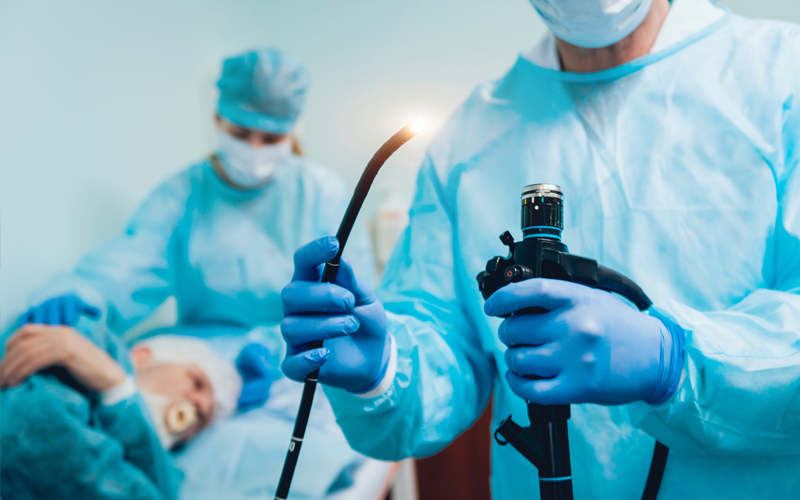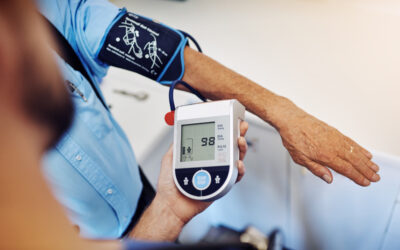By Ed Sutton MD, Alex Johnson CRNA, Sharon Stroud CRNA
Case Report: The patient is a 69-year-old male with a history of daily tobacco use, COPD, and essential tremor. Medications included propranolol and Topamax. The patient had no documented food or pharmacologic allergies. No surgical history: colonoscopy with a history of polyps in 2002 with no information on the sedative agent used. ASA II physical status.
On the day of the colonoscopy, he was monitored according to ASA standards and given 250mg of propofol IV incrementally over 19 minutes. Oxygen supplementation at 2L/minute by nasal cannulae. The patient had stable vital signs throughout the procedure, with the end-of-case VS of BP 124/68, P 98 NSR, R 22, SPO2 96%, ETCO2 37mm Hg.
Upon arrival at PACU, the patient was lethargic but talking, complaining of severe itching and nausea. His vital signs at that time were BP 71/41, P 35 SB, R 18, SPO2 88%. The patient had a diffuse “maculopapular deep red rash across his chest, axilla, and groin.” His skin was described as “diaphoretic and gray.” He was immediately placed on a nonrebreather mask at 10 L/m and given a sympathomimetic agent, ephedrine 10mg, increased IV fluids, diphenhydramine 25mg, famotidine 20mg, and Solu-Medrol 125mg. The patient’s vital signs quickly normalized, and he was monitored for three hours in the PACU, with moderate improvement of rash. He was discharged home with instructions to immediately call 911 should symptoms return, or the rash worsen and see an allergist within the next 2-3 weeks.
Anaphylaxis Physiologic Review:
Type 1 immune-mediated symptoms and anaphylaxis can occur with the production of IgE antibodies after exposure to a foreign substance, such as food, drugs, pet dander, pollen, and spores. Symptoms can remain localized (hay fever, asthma, hives, eczema) or become systemic, with profound circulatory compromise (anaphylaxis). After initial exposure, susceptible patients form a large amount of IgE antibodies, which circulate and attach to tissue mast cells and circulating basophils. Upon second exposure to the antigen, IgE antibodies cause mast cells and basophils to degranulate, releasing vasoactive compounds such as histamine, proteases (which initiate the complement system), leukotrienes (which act as chemotactic factors recruiting eosinophils and neutrophils), prostaglandins, and cytokines (which create tissue injury by IL1-6 and TNF).
Nonimmunologic mediated symptoms and anaphylaxis, also known as “anaphylactoid” reactions, are caused by foreign substances that induce local or systemic sudden massive mast cell or basophil degranulation without immune IgE complex formation. Examples we commonly see in the operating room are localized itching and flushing with Fentanyl, hypotension from Vancomycin, and allergic reactions to radiocontrast agents. Nonimmunologic anaphylaxis (anaphylactoid) reactions can occur with initial exposure but are often as severe as immune-mediated anaphylaxis.
Propofol as an inducing agent of anaphylaxis:
2,6- Di-isopropylphenol (propofol) can cause mild allergic-type symptoms and can also induce systemic anaphylaxis. We’ve all seen patients wake up complaining of itching after propofol deep sedation. The incidence of hypersensitivity is unknown but is estimated to be one in sixty thousand. Full-blown anaphylaxis to propofol is rare. The molecule has two allergenic sites: the isopropyl side chains and the phenolic ring. Many patients who develop anaphylaxis after first exposure (anaphylactoid) may have a preexisting hypersensitivity to the di-isopropyl or phenolic ring. Di-isopropyl radicals are found in many dermatologic products and lipid formulations. As a result, we should ask patients about intolerance to cosmetics or previous total parenteral nutrition (TPN) with lipids when questioning potential allergy to propofol.
As you know, propofol is formulated in soybean oil, egg lecithin, and glycerol. After more than 30 years of clinical use and allergy testing, it appears that allergic reactions to the drug are not related to soy or egg allergy but to the 2,6 di-isopropylphenol molecule itself or the lipid formulation. These documented allergic reactions in the OR have also been complicated by exposure to other highly allergenic drugs and substances (e.g., antibiotics, steroid muscle relaxants, local anesthetics, narcotics, and now sugammadex). The American Academy of Allergy Asthma & Immunology (AAAAI) has recently released a statement: “Patients with a soy allergy or egg allergy can receive propofol without any special precautions.” Despite this statement and more than 30 years of clinical use, the FDA-approved package insert still lists an egg allergy and soy allergy as contraindications to the drug’s use. Thus, my advice remains to proceed cautiously in highly allergy-prone patients and to consider expanding your explanation and documentation when obtaining informed consent.



